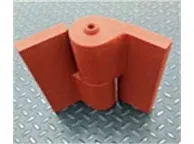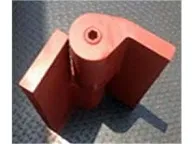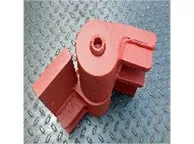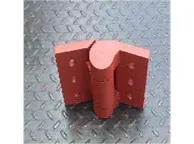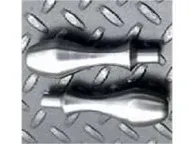How to Select Hinges for Your Doors?
Hinges are designed to support gates, vaults, and doors in the commercial, industrial and residential areas. These hinges are known to improve security of the doors by supporting their weight and adds to their aesthetic value. Although hinges firmly support the door and facilitate its movement, still they are one of the most overlooked components of a door. Owing to advancements in technologies, today it is easy to find hinges in various specifications and dimensions. This article will introduce you to different considerations to be made when selecting hinges for your doors, vaults and gates.
How to Select the Hinges for Your Door?
Selection of hinges requires factual evaluations and lots of planning. Owing to a broad range of considerations to be made, sometimes the start may be difficult. The following steps will ease your selection process.
Determine Where, How, and Why You Want to Use Hinges: This is the first step in the hinge selection process. Depending on the utilization, hinges are differentiated into the following types:
- Industrial Door Hinges: These are heavy duty hinges developed for protecting heavy doors, radiation shielding doors as well as security doors.
- Commercial Door Hinges: The hinges of this type are mainly designed for protecting medium weight doors in commercial as well as industrial areas.
Once the type of hinge is confirmed, the next consideration to be made is where these door hinges will be used. Be it commercial, residential, or industrial application, the hinges are mainly used to support these:
- Interior Doors: Your home, office, or industrial area may have multiple doors than the main door that grants you access inside. Although all these doors are created to separate certain areas, they may not use the same type of hinges. So you need to consider where and how the hinges will be used.
- Exterior Doors: and Gates It is often seen that industrial areas and offices are secured with multiple exterior heavy duty doors. These doors help protect the property and restrict the entry of intruders, and thus they are equipped with heavy duty hinges. The hinges used on heavy duty doors are made from strong and durable materials so that they can withstand excessive use, or harsh environmental conditions.
Consider the Standard Hinge Types: Most residential and commercial hinges are distinguished into these types:
- Standard Hinges: These hinges are mainly distinguished into the following types:
- Full Mortise: Both leaves of hinges are mortised, one in the frame, and one in the door.
- Half Mortise: One leaf is applied to the frame, other is mortised in the door.
- Full Surface: Both leaves are applied to the surface, one to the frame, and one to the door.
- Half Surface: One leaf is applied to the door and the other is mortised in the frame.
Check on Various Types of Interior and Exterior Door Hinges: There are several types of interior and exterior door hinges available for consideration. Let’s begin with exterior hinges first:
- Butt Hinges: These hinges feature two identical leaves— one is attached to the fixed component, and other to the moving component.
- Ball Bearing Hinges: These hinges are equipped with a ball bearing between two knuckles. This bearing helps reduce the friction.
- Strap Hinges: Also known as gate hinges, strap hinges have the longest leaf among all exterior door hinges.
- Pivot Hinges: Many tall exterior doors are perfectly aligned and secured using these hinges. These hinges pivot when the doors are opened.
- Heavy Duty Hinges: Made of durable materials, these hinges are stronger than regular hinges.
Is that all? In the next article, we will discuss a few more important factors of consideration for hinge selection.




